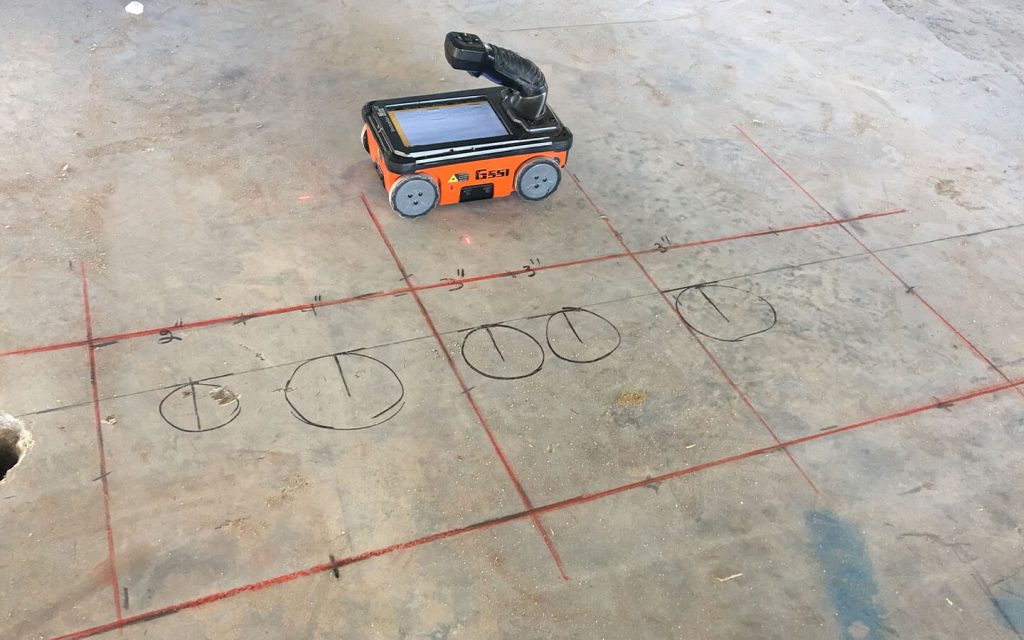Advanced Concrete Scanning Techniques: Making Certain Structural Honesty
Advanced Concrete Scanning Techniques: Making Certain Structural Honesty
Blog Article
Past the Surface: Leveraging Advanced Concrete Scanning Techniques for Unmatched Precision and Understanding
Advanced concrete scanning strategies have emerged as important tools in this search, offering a glance below the surface area to unveil a world of essential understandings. By utilizing sophisticated modern technologies, professionals can uncover anomalies, evaluate the condition of concrete structures, and make informed choices that shape the training course of jobs.
Importance of Advanced Concrete Scanning
The relevance of utilizing innovative concrete scanning methods lies in the exceptional accuracy they use for detecting sub-surface abnormalities and ensuring structural integrity. By employing innovative technologies such as ground-penetrating radar (GPR), electromagnetic induction, and advanced finder imaging, construction professionals can dive under the surface area of concrete frameworks with a degree of accuracy that much surpasses typical examination approaches. Concrete Scanning. These strategies enable the identification of covert hazards like rebar deterioration, voids, avenues, or post-tension cords that might jeopardize the stability and safety and security of a framework over time
In addition, progressed concrete scanning offers vital understandings right into the overall condition of a concrete aspect without the need for invasive steps, minimizing the danger of creating damage throughout the assessment procedure. The capability to identify the precise place and deepness of prospective problems enables targeted fixings and maintenance, ultimately extending the life expectancy of the framework and enhancing its efficiency. Basically, the importance of innovative concrete scanning can not be overstated in the world of building and construction and framework maintenance, where precision and integrity are extremely important.
Kinds Of Cutting-Edge Technologies

Anomalies and Defect Discovery

In addition to GPR, concrete scanning methods like thermography and impact-echo testing are likewise effective in finding problems and anomalies. visit here By leveraging these innovative methods, professionals can proactively attend to architectural concerns, making certain the longevity and safety and security of concrete structures.
Assessing Concrete Problem
Just how can engineers accurately evaluate the condition of concrete structures to ensure their durability and safety? Numerous sophisticated concrete scanning strategies are employed for this function. Ground-penetrating radar (GPR) is typically utilized to assess the interior structure of concrete, discovering gaps, splits, and various other anomalies that might jeopardize its stamina.
Additionally, aesthetic examination continues to be a fundamental component of concrete condition analysis. Engineers aesthetically analyze the surface area for indicators of degeneration, such as spalling, splitting, or discoloration. Combining non-destructive screening methods with visual evaluations enables an extensive examination of concrete condition, making it possible for designers to recognize possible issues beforehand and apply timely maintenance or repairs. By leveraging these innovative strategies, designers can ensure the long-lasting durability and safety and security of concrete frameworks.
Enhancing Decision-Making Processes
In the world of facilities management, optimizing decision-making procedures is important for ensuring the reliable upkeep and long life of concrete structures. Improved decision-making procedures in concrete monitoring include using innovative scanning methods to gather in-depth data on the condition of frameworks. By leveraging innovations such as ground-penetrating radar and 3D imaging, stakeholders can make enlightened decisions concerning repair work, substitute, or support methods.
These advanced scanning techniques provide important insights right into the inner make-up of concrete, identifying prospective problems such as voids, cracks, or deterioration that might not be noticeable on the surface area. This level of thorough details permits proactive upkeep preparation, reducing the important source danger of structural failures and enhancing the general life-span of concrete frameworks.
Furthermore, by including digital documents and evaluation tools right into the decision-making process, stakeholders can track the evolution of concrete problems gradually, allowing predictive maintenance methods and optimizing resource allowance. Eventually, the combination of innovative concrete scanning methods enhances decision-making processes by giving unmatched accuracy, insight, and effectiveness in facilities management.
Conclusion
To conclude, progressed concrete scanning methods use unmatched accuracy and understanding in discovering abnormalities, issues, and examining the condition of concrete structures. By leveraging sophisticated technologies, decision-making procedures can be improved, resulting in more enlightened and reliable remedies for maintaining and repairing concrete framework. These methods play a critical function in guaranteeing the safety and longevity of concrete structures, making them an essential device in the field of building and design.
Moreover, advanced click this concrete scanning supplies vital insights right into the total problem of a concrete component without the requirement for intrusive procedures, reducing the danger of causing damage throughout the assessment procedure - Concrete Scanning. Another innovative modern technology is 3D X-ray scanning, which gives thorough images of the interior framework of concrete, offering important details without the demand for damaging screening. Additionally, Concrete Cover Meters are used to measure the thickness of concrete cover over reinforcement bars precisely. Boosted decision-making processes in concrete monitoring entail using innovative scanning techniques to gather comprehensive data on the problem of structures.In conclusion, progressed concrete scanning methods offer unparalleled accuracy and understanding in detecting anomalies, flaws, and evaluating the condition of concrete structures
Report this page